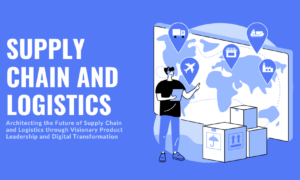While many other industries have completed their digital transformation process, the construction industry has been slow to adopt new technologies. Under continued pressure to meet shorter project deadlines while reducing construction costs and improving safety, more architects, engineers, and contractors are turning to digital technologies to achieve a competitive edge for their clients.
As digital transformation continues to evolve and expand, many business processes that were once performed manually or required human interaction are becoming automated. The process of designing, planning, building, and maintaining construction projects has improved thanks to digital transformation and innovations. Building Information Modeling (BIM) allows for the creation of intelligent 3D models. 3D printing offers a faster prototyping and production process. Drones can provide aerial data capture for surveying. Augmented reality systems overlay digital information onto the physical environment, merging imagination with reality.
What Is Digital Transformation?
Digital transformation integrates new technologies across the construction industry to optimize operations, improving efficiency, productivity, safety, and customer satisfaction. Most new construction technology falls into one of four categories:
- Advanced building materials
- Automation & robotics
- Project modeling and design software
- Information technology for project management
This article explores and discusses the information technology component, which includes team communications, company processes, and workplace documentation challenges.
Team Communications
One benefit of many project management platforms is tracking and storing the drawings, notes, and emails exchanged between the design and build teams. With a few clicks, a team member can review, edit, and share every step of the process, from submitting the original design to the required changes and the initial and final approval dates.
Readily accessible project files allow design and build teams to collaborate more efficiently and effectively. Streamlining and simplifying team communications, decisions, revisions, and approvals helps keep the project on schedule while reducing final design and construction costs.
Company Processes
Typically, improved communications highlight redundancies and bottlenecks where company processes can be streamlined. For contractors and facilities managers, accounts payable duties alone can include:
- Supplier inquiries
- Invoice processing
- Change order/service approvals
- Staffing schedules
- Maintenance schedules
- Product inventories
- Workplace documentation
Eliminating or streamlining these processes improves the company workflow, boosting employee productivity and lowering service costs.
Workplace Documentation
Unfortunately, many design and project management platforms lack one critical element for facilities managers: workplace documentation. Most of these platforms deal with tracking milestones, approvals, and completion dates for the building’s original construction.
Facility managers, future vendors, and future subcontractors need more information to perform their work effectively.
- Original project plans and specifications
- Changes to the original work
- Updates to cabling infrastructure
- Product QR codes
- Product inventories
- As-built drawings
Solutions like Grid Mobile® can simplify and futureproof workplace documentation chores for data cabling and power distribution systems by assembling these critical data points into one easy-to-use centralized location. Facilities managers can then grant access to vendors, suppliers, and third-party contractors, as needed, for maintenance, repairs, upgrades, and complete reconfiguration needs.
Gridd Mobile includes an AR (Augmented Reality) feature to help identify potential issues and determine possible solutions within access flooring, while limiting employee and customer disruptions. The application displays a roadmap of the entire cabling system within a room on the technician’s smartphone or tablet.
For workplace facility leaders looking to reduce the administrative burden on their technicians, optimize limited resources for top priorities, and generally upgrade management visibility, embracing advances like mobile documentation platforms checks all the boxes. The shift may take adjustment, but simply put, going digital stands to vastly streamline the facilities documentation process. That smooths the way for teams to focus on providing the responsive, high-performing built environments that today’s tenants and a competitive business landscape demand.



































